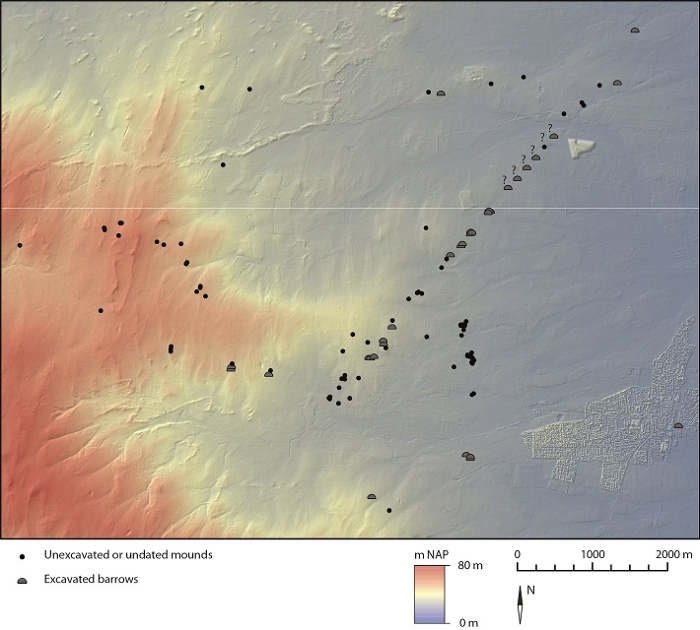Fieldwork campaign
The Epe-Niersen barrow alignment
What is the difference between highly visible and poorly visible monuments on the alignment? And is this difference reflected in the social position of the dead buried underneath these mounds.
- Duration
- 2016
- Contact
- Quentin Bourgeois
- Funding
-
 NWO
NWO
- Partners

Within the framework of the Networked Landscapes research-project, fieldwork will be carried out together with the municipality of Epe and several other partners. The principle site under study is the Epe-Niersen barrow alignment. Here, some 50 burial mounds are placed in one single long alignment extending over almost 6 km in length. The alignment has been partly excavated in the early 20th century, in particular by Jan Hendrik Holwerda, then curator at the National Museum of Antiquities (Rijksmuseum van Oudheden). The finds he recovered from some of these burial mounds suggest that it originated in the early 3rd Millennium BC, and that the earliest barrows on this alignment cover Single Grave Culture (or Corded Ware) burials.
Since these early research interests, large parts of the barrow alignment have been restored, protected and declared scheduled monuments. However, it has become clear over the past few years that there are significant gaps in our understanding of this site. While we do have information on the excavations by Holwerda in the early 20th Century, they significantly lack in detail. It is sometimes unclear which burial mound he investigated, and to what extent he excavated the entire monument. And at the same time, new computer models have highlighted a visual hierarchy where some of these mounds are much more noticeable than others. In particular some of these monuments, which have never been investigated, play a structuring role in the lay-out of the entire alignment. They form nodes within a wider network of alignments. Yet it is unknown whether these mounds then cover different types of burials as opposed to the others?
The aim of this project is two-fold. On the one hand we want to carry out an intensive survey of the entire barrow alignment and its environs, and on the other we wish to increase our knowledge with targeted excavations. The first aim will be carried out in 2016 and 2017, while the excavations will probably be carried out in 2017 and 2018.

The Epe-Niersen barrow alignment on the Veluwe in the Central Netherlands. The alignment extends over 6 km in length and the majority of the excavated mounds can be dated to the 3 rd Millennium BC (Bourgeois 2013, fig. 5.1).
Alongside the scientific focus of the project, also wish to disseminate the scientific results of the project to the wider public. The Epe-Niersen alignment is one of the most enigmatic remains of prehistoric societies in the Netherlands, yet very few people are aware of its existence. Together with the Municipality of Epe, we aim to make this site known for a much bigger audience.
